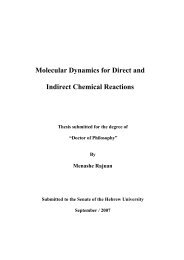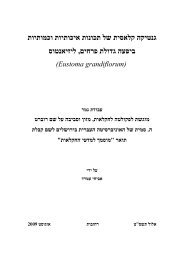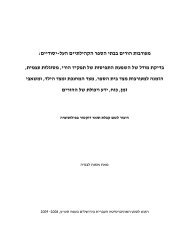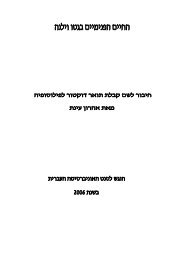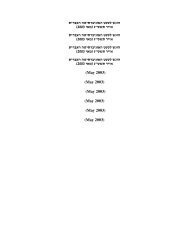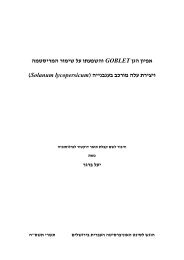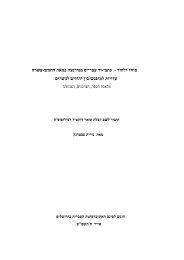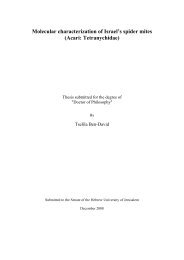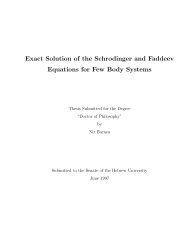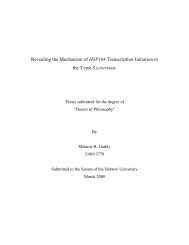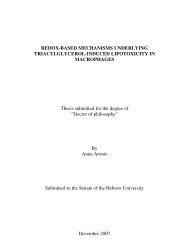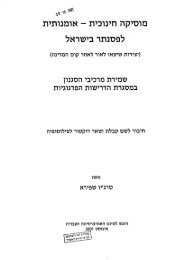The Autecology of Eudiaptomus cf drieschi (Poppe & Mrazek 1895 ...
The Autecology of Eudiaptomus cf drieschi (Poppe & Mrazek 1895 ...
The Autecology of Eudiaptomus cf drieschi (Poppe & Mrazek 1895 ...
You also want an ePaper? Increase the reach of your titles
YUMPU automatically turns print PDFs into web optimized ePapers that Google loves.
divides the lake with a warm, oxygenated, CO 2 depleted epilimnion, and a cold, anoxic<br />
hypolimnion with H 2 S and CO 2 .<strong>The</strong> general circulation patterns are seasonal and<br />
determine the formation <strong>of</strong> the thermocline and movement <strong>of</strong> the internal seiche.<br />
<strong>The</strong> main source <strong>of</strong> water to the Kinneret is the Jordan River system. <strong>The</strong>re are also<br />
thermal-mineral springs along the shores and on the lake bottom. <strong>The</strong>se springs<br />
influence the chloride concentration <strong>of</strong> the lake waters. <strong>The</strong> pH values <strong>of</strong> the lake water<br />
are also seasonal, with the lowest values observed during the turnover and highest values<br />
in late spring (7.5-8.9). Oxygen levels in the epilimnion and hypolimnion are influenced<br />
by external weather conditions and consequently vary from year to year.<br />
Bottom sediments are made up <strong>of</strong> a dark, flocculent upper layer <strong>of</strong> 2-5 cm. thickness,<br />
and a more compact, gray material below. Sedimentation rates vary at specific locations:<br />
higher in the north and lowest in the central deep waters. <strong>The</strong>re is also a seasonal<br />
difference in sediment deposition. (Serruya 1978).<br />
Biota<br />
<strong>The</strong>re are over 250 species <strong>of</strong> phytoplankton in the Kinneret including the<br />
din<strong>of</strong>lagellate Peridinium spp. (Gophen & Pollingher 1985). <strong>The</strong> bloom season <strong>of</strong> the<br />
Peridinium occurred with great regularity from late winter to early spring (February-<br />
May) but the highest number <strong>of</strong> species in the lake is represented by the Chlorophytes.<br />
<strong>The</strong> presence <strong>of</strong> such temperate species as Rhodomonas sp. and Cryptomonas sp.,<br />
indicates that cold stenothermic forms can survive during the winter period in warm<br />
lakes. <strong>The</strong> fall season is dominated by nanoplanktonic species with low species<br />
diversity, however during the winter, species diversity is highest. Phytoplankton<br />
biomass peaks in the spring and the diversity begins to decline. Summer shows a drastic<br />
decrease in algal species diversity, with the nanoplanktonic green algae predominating



